Task 📒
The Task module is central to Jamku, serving as the core component for managing client work. A Task represents a specific Project, Engagement, or Job for a client. Examples include:
- IT Return filing for 2025 of Mr. A
- GSTR-3B for October 2025 of ABC Ltd.
- PAN Card application of Mr. Y
In certain situations, based on office requirements, a single job may be divided into multiple Tasks for improved tracking. For instance, if accounting for a client is performed year-round, it can be segmented into:
- 4 Tasks, one for each quarter
- 12 Tasks, one for each month This splitting is purely based on tracking needs. This splitting will determine the periodicity of the compliance.
All the "things" you do for the client should be created as Task. The task may or may not be billable. This ensures there is no revenue leakage.
Task are of 2 Types.
- Regular - Linked to a service
- Recurring
- Non Recurring
- One time task - Not linked to any service
❓ 👉 View all Questions related to Task
Fields in Task
Each Task stores the following information:
Note: * - Mandatory field
- *Task No
10Automatically Generated - *Task Name
50Picked from Service Master or User entered Can be edited by Admin - *Client No
10Link to Client Master - Task Name 2
100Additional Information about Task - Task Status
1G (Going), S (Stuck), C (Completed), I (Ignore) - Priority
Number1 (Highest) to 5 (Lowest) - Stuck Reason
200Reason for Task being stuck - Service ID
NumberLink to Service Master (NULL for one time task) - Compliance ID
NumberLink to compliance Master - Periodicity
1M (Monthly), Q (Quarterly), H (Half-Yearly), Y (Yearly) - Period
3Jan,Feb,...,Dec, Q1, Q2, Q3, Q4, H1, H2, 1 - Year
4Compliance Year (In case of recurring task) OR Firm's Financial Year (In case of Non recurring task) - *Creation Date
DateDate of Task creation - Target Date
DatePlanned completion date - *Due Date
DateDeadline for Task completion - Completion Date
DateActual completion date - Verification Status
Yes/NoIndicates if Task is verified - Verified By
UserTeam Member who verified the Task - Verification Note
100Note added by user who verified the task at the time of verification - Client Visibility
Yes/NoDetermines if Task is visible to the client - Creation Method
1S(single),B(Bulk),I(Import),A(API) - pcenter
20Associated profit center - ccenter
20Associated cost center - category
20Task category - ct
DateTimeRecord Creation Time - mt
DateTimeRecord Last Modification Time - cby
UserRecord created by - mby
UserRecord last modified by
Billing Fields in Task
- Estimated Hours
NumberBudgeted hours for Task completion - Estimated Amount
NumberCan be used for many application in tracking task efficiency - Billing Private Note
200Visible to users withMoney:Yespermission, Editable by users withBilling:Yespermission - Billing Public Note
200Visible to all users, Editable by users withBilling:Yespermission - Billing Status
Yes/No/PartlyTrack billing status of task - Billing Date
DateDate of last Billing - mt
DateTimeRecord Last Modification Timestamp - mby
UserUser who last modified the record
Note
- Number in (eg.
1) indicates number of characters. - * Before the filed name indicates it's a mandatory field.
Task Namewill be service name if the task isRegular(aka Linked to a service).
If task isOne Off(aka Not linked to service), then user can manually specify theTask Name.- If Task is
Recurringin nature,Compliance ID,Periodicity,Period,Yearare mandatory. - To store additional custom information about task check out Task Custom Fields Guide.
- To add custom task status check out Label Guide
- To add custom note to the task check out Task Notes
- To track progress of task check out Todo Guide and Stages Guide
- To create subtask under a task (only recommended in case of larger client engagement) check out [Sub Task Guide]
Task lifecycle
Tasks in Jamku follow two main lifecycles:
A. Task Status- This tracks progress of the task from start to finish
B. Task Billing- This tracks the financial status of the task
Task Status Lifecycle
- Task Creation & Assignment- The task is created and assigned to a team member.
- Progress Tracking – Work begins. If any delay occurs (e.g., waiting for client input), the task can be marked as "Stuck."
- Task completion- The work is completed and the task is marked accordingly.
- Task verification- The completed task is reviewed and verified for quality and correctness (if applicable).
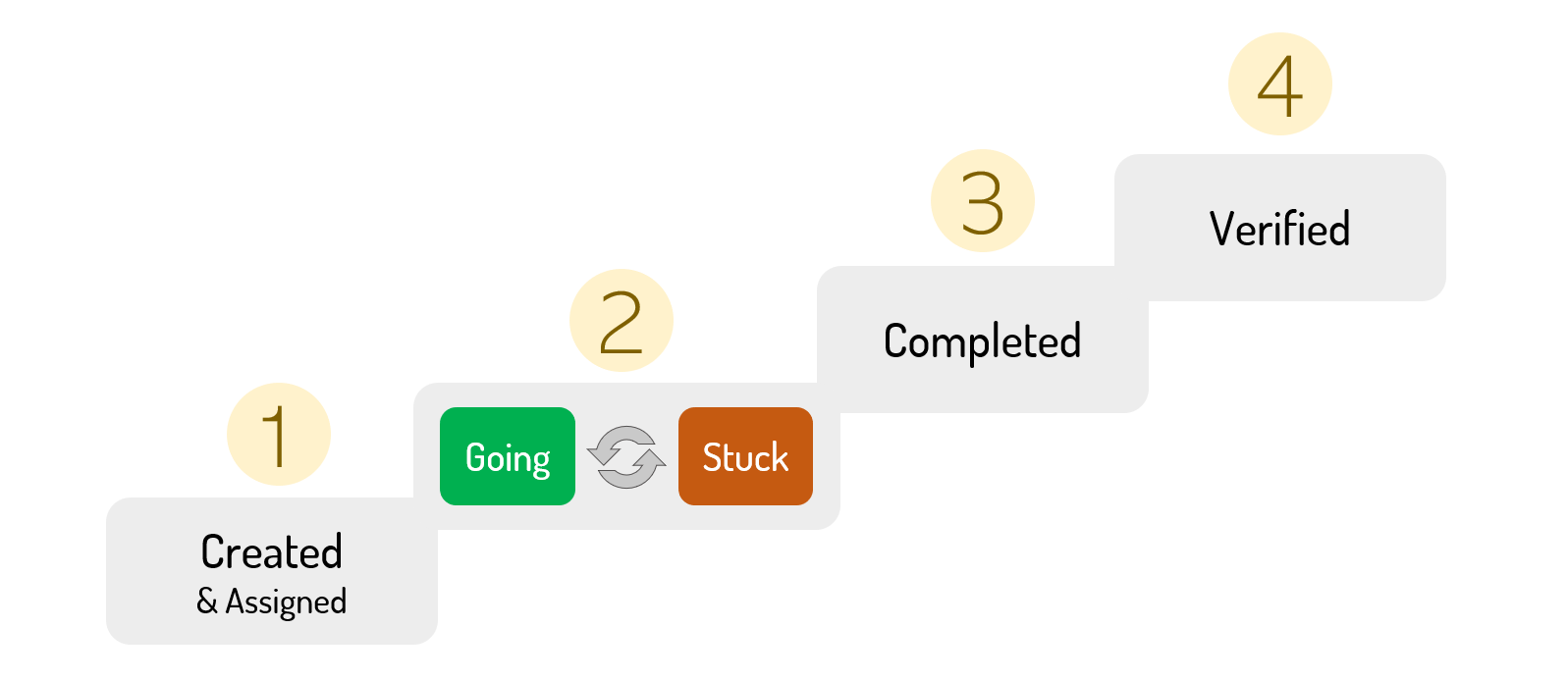
Task Billing
- Unbilled- The task is created but yet to be billed.
- Billed / Partly billed
- Receipt (When money is received from client)

Create Task
To create a Task, you must first create a Client. Only users with the TaskCreate:Yes permission are allowed to create Tasks.
View Task
Click on Task Name or Number from anywhere in the Jamku and you will be taken to Task View. Mostly, you will be using Task List to search for a Task and then open (aka View) Task.
Create Tasks in Bulk
Tasks can be created in bulk using "Compliance Dashboard > Non Comp View".
Go to Compliance Dashboard, by default it opens in
CompView.
Click on the View Selector (indicated by an arrow) to switch to Non Comp View.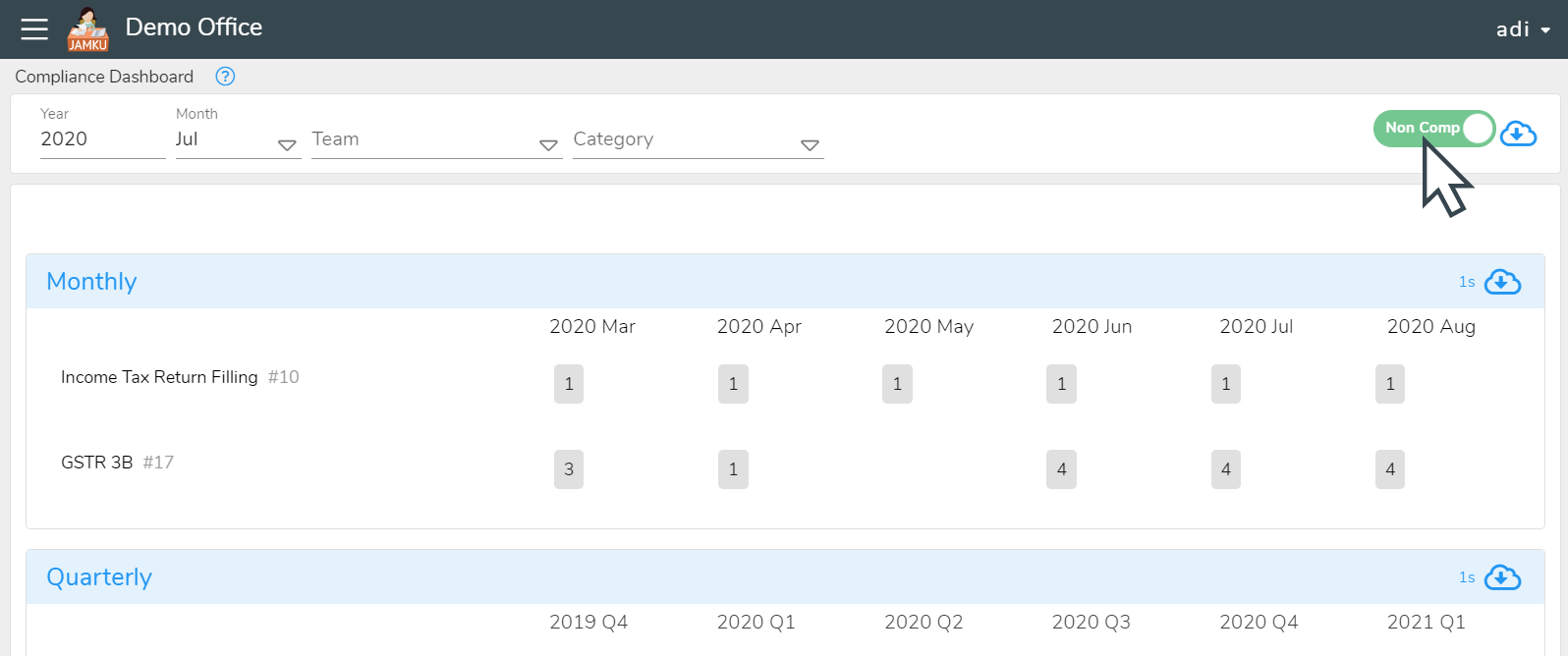
The grey chips against the sevrice names show the count of clients for whom Task is not yet created.
Click on any of the chip
This will take us to the client list.
In this example, we have clicked on4in June 2020 for GSTR 3BIn the client list, it will automatically filter the 4 clients.
Click onSelect All(Denoted by Arrow 1)
Click onCreate task(Denoted by Arrow 2)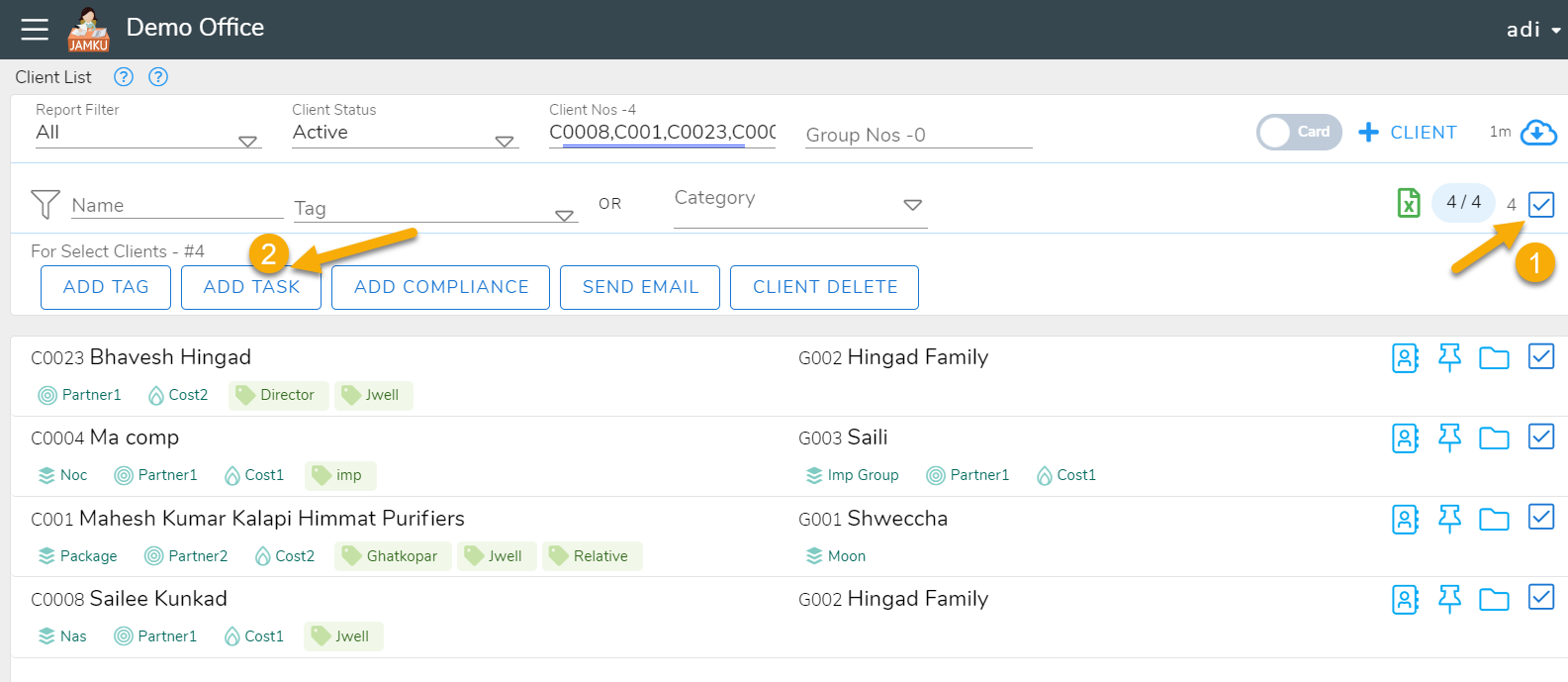
On the task creation dialogue, most of the details will already be filled up.
As you can see, the task name is already filled.
Simply clickContinue. You can optionally enter Task Name 2.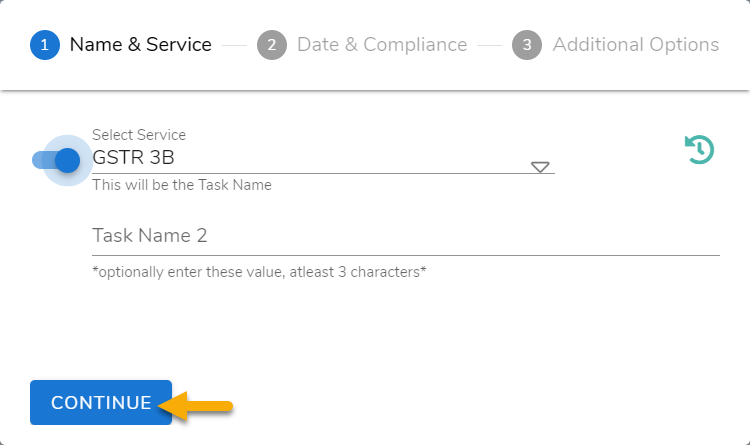
Enter due date for the tasks & click
Continue.
Periodicity, Period, Year all already filled up. Optionally enterTarget Date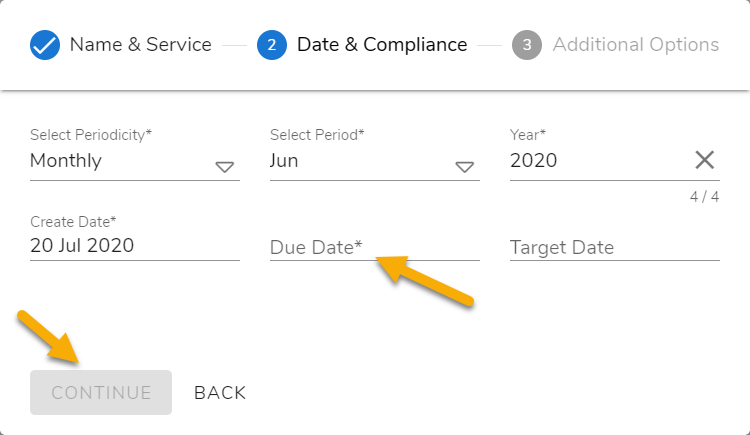
Finally click on
Start Task. This will create task for all the selected clients.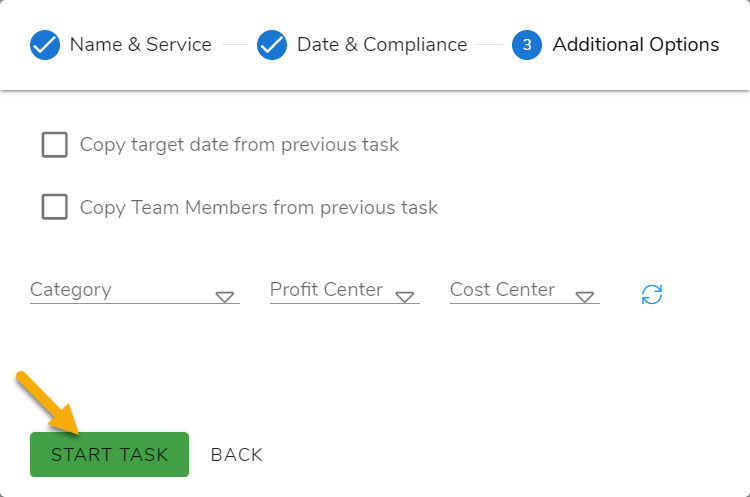
Once the tasks are created, you will be taken
Bulk TrackingPage.
Here, we can check if all the tasks were created successfully. If there is an error, the error message is displayed inMessagecolumn
Delete Task
Users having permission Delete : Yes can delete tasks.
Important:* A task cannot be deleted if any of the following records are associated with it*
Task cannot be deleted if there exists any of the below records
- Work Done
- Shortcut
- Uploaded File
- Completed To-Do
- Sub Task
Ensure these records are cleared (if appropriate) before attempting to delete a task.
Task Notes
There are 2 types of task notes
- System Generated- Automatically created by the system when key fields are updated.
- User Manual entry- Notes manually added by users to record additional information or context.
System-generated notes are created when any of the following fields are changed:
- Task Status
- Due Date
- Target Date
- Profit Centre
- Verification Status
- Team member assigned to Task
- Team member unassigned from Task
These notes help maintain a clear audit trail of changes made to the task over time.